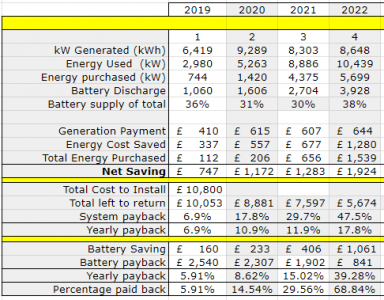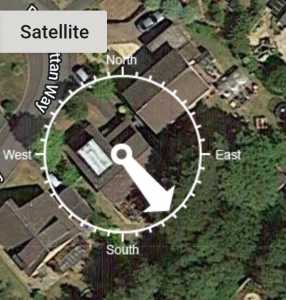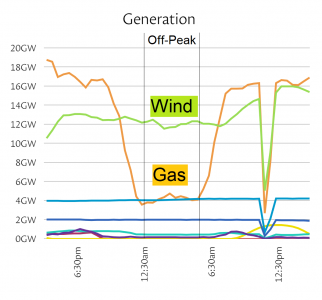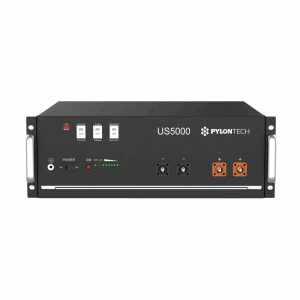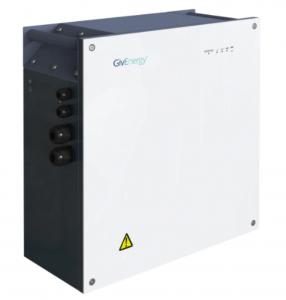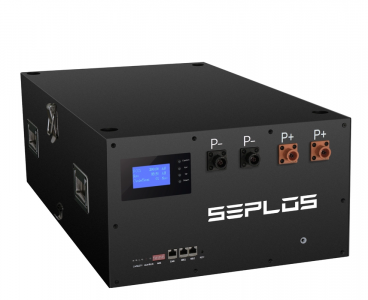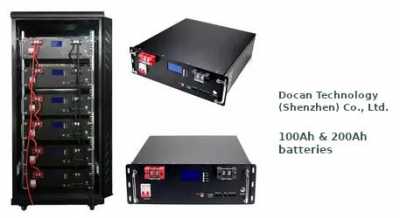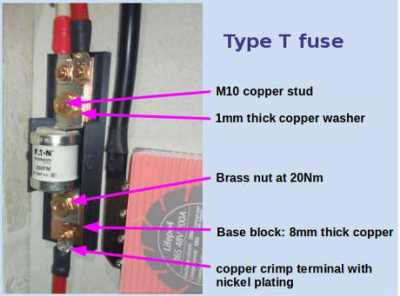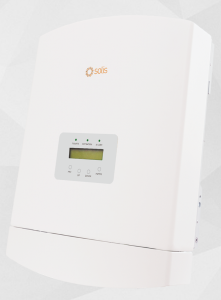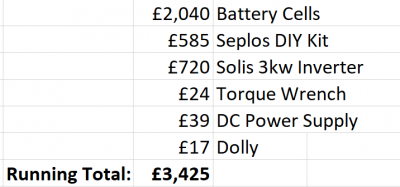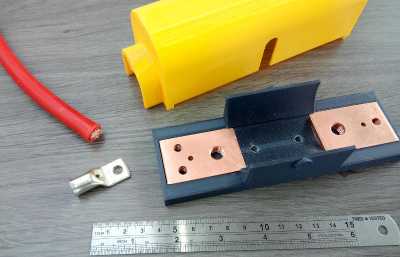A beginner's journey into DIY home energy storage - no solar!
After a summer spent investigating solar panels, solar irradiance, inverters, optimisers, mounting systems, tree protection orders, flat roof covering materials, permitted development planning rules, ROI/payback calculators and many quotations by both reputable and unreputable installers, I finally accepted that my property simply isn't suitable for solar when viewed through the lens of financial rationality. This resignation was much to my partner's relief, whom, after suffering several months of my fixation, was entirely sick of hearing about it all!
Unfortunately for her, I then stumbled across the world of DIY-battery installs 😀.
There exists excellent guidance resources on this topic within this very forum (massive shout-out to THIS THREAD in particular, in which @batalto and @Transparent provide high quality discussion), as well as on the DIY Solar forum and YouTube (I found Off-Grid Garage to be particularly useful). However, I felt detailing my experience as a relatively lay person with no prior electrical knowledge beyond replacing a light fixture may prove useful to others who venture down this path.
In this initial post I'll detail why I want to install home energy storage. Future posts will cover what I've purchased thus far (incl. where from, for how much and purchase reasoning), initial battery setup, inverter installation, commissioning.
My hope is to integrate my learnings from multiple sources into a single resource and to get feedback/advice on where I may be missing something or going wrong from those on this forum with more experience.
WHY? - The financial justification for home battery storage
I've recently bought an EV and will be moving to the Octopus Go tariff for off-peak overnight charging of the car. Currently, Octopus Go charges 12p/kWh between 00:30-04:30 and 40p/kWh the rest of the day. My current standard 'price capped' tariff rate is just shy of 34p/kWh.
My house consumption is 3000kWh a year and I expect the car will use a similar amount. For simplicity's sake we'll assume 6000kWh/year total with 3000kWh of that usage being 'off-peak' car charging and ignore any other load shifting e.g. running the dishwasher/washing machine at night:
Standard Tariff = 33.76p x 6000 = £2025 Annual Cost
Octopus Go = (40p x 3000) + (12p x 3000) = £1560 Annual Cost = £465 saving vs Standard Tariff
If I install home battery storage then I can theoretically shift my entire usage to the off-peak rate by charging the battery when electricity is cheap and discharging throughout the day to avoid pulling expensive electricity from the grid:
Octopus Go + Battery Storage = 12p x 6000 = £720 Annual Cost = £840 saving vs Octopus Go w/o Battery
Woah - an additional £840 saved on top of the initial £465 - that's a significant amount of money!
I've (perhaps optimistically - more on that in a future post!) budgeted £4000 for this project.
If the above rates remain unchanged then battery storage would pay for itself in 4 years and 9 months. In this scenario, people often divide £4000 by £840 to get an annual Return on Investment (ROI) of 21%. However, that ignores depreciation of the equipment and doesn't leave you any better off cash-wise than had you not bought battery storage in the first place. Instead, 4.75 years should be considered the payback period. If we assume battery storage to have a 10-year working life then we'd generate £4410 profit over the remaining 5.25 years. This £4410 is the true ROI; £4410 / 10 years = £441 'profit' / year = 11% annual return on an initial £4000 investment.
This calculation is fraught with unknowable future variables - the most significant of which are:
1) the gap between Octopus Go's peak and off-peak rates will likely vary (the current gap is near record highs)
2) a component of the battery storage may break and need to be replaced (conversely, the system may well last longer than 10 years!)
Fudge Factors
Ball park estimation established (£840 saving vs Octopus Go w/o Battery), lets add a few details to hone in on a more accurate figure.
Firstly, a significant amount of electricity is lost when converting between grid-supplied AC and battery-stored DC. This varies depending on the efficiency of the particular inverter used (more on that in a future post). As a rule of thumb, I'm going to assume 10% loss when charging the battery and 10% loss when discharging the battery; adjustment of +20% to annual cost of non-EV usage = +£72 = £792 Octopus Go with Battery
Secondly, some of my standard usage will incidentally fall into the off-peak window. I've calculated a very approximate 255kWh/year to account for this based on 175w base load usage overnight; net adjustment of -£78 from Octopus Go w/o Battery = £1482
New Annual Price Differential = £690
(There may also be times when the inverter attached to the battery is not able to discharge the battery quickly enough to fully meet the demands of the house but I don't consider this significant for my case.)
New estimated payback period = £4000/£690 = 5.8 years with £2208 'profit' over the remaining 3.2 years, 5.5% annualised ROI.
So, that's the basic economics of it.
Battery storage without solar.
My gut tells me the gap between peak and off-peak rates will probably lessen over the life of my battery storage system, but also that 10 years end of life for the full system is overly pessimistic. Still, forecasts must be based on something!
Financially, I'd be better off putting in more hours at my life-sucking day job than researching and implementing my DIY plan, but I trust I'm amongst like-minded folk here when I say that learning new skills and developing interests can be its own reward 😀
Hi korwraith,
Great post!
Looking forward to the next instalment... what did you purchase?
Honestly batteries are insanely good at the moment - but especially so if tied to solar of some kind as your summer bills would be zero. I would suggest if you go down the path then you buy a hybrid inverter. This would mean at some point you have the option to add solar. Its very easy to add a few panels at the bottom of the garden on a frame or the roof of a shed. This kind of solar DIY is super cheap to do.
I estimate my battery has saved me around £1000 this year, SO FAR. Ignore the energy purchased cost, it assumes I am paying peak for all my power - I am not. At some point I need to modify it to take into account my actually amount paid. But I'll have to do that via working out my true cost per kw at the end of the year. Considering I am over £1000 in credit at the moment and my DD is only £134 a month, that figure is wrong.
@batalto I'd love to add some low level shed/garage DIY solar into the mix but unfortunately my garden is rather well enclosed by nearby woodland 😥. Panels could certainly be installed on the rear south east roof but even in mid summer it's mostly shaded until 11am. The trees are covered by a TPO and the council have refused permission for removal/reductions. The north west aspect is unshaded but being north facing would similarly have reduced generation. The flat dormer roof is a decent size (18sqm), sturdy, and would possibly take 4 panels tilted south west - but it's covered in old felt nearing the end of its life.
So yes, there are some options there but none are ideal. As such, I'm going to proceed on the basis that cheap off-peak electricity will be with us for some time; a future rise in import prices may make me re-evaluate the case for solar. It's around £700 for a battery only inverter and £1200 for a battery/solar inverter so quite a big cost uplift for uncertain future proofing. I could always sell and upgrade between inverters if my thoughts on the matter change.
(for clarity, "front of house facing north west = the front of the house faces north west")
Main Post #2 - Battery Options - Capacity & Cost
In post #1 I covered the (current!) economic case for solar-free battery storage, as a quick aside I thought it worth mentioning that there is also an environmental case despite the lack of on-site generation.
The UK electricity grid uses a variety of energy sources, some clean/renewable, others polluting/finite. The mix of clean to polluting sources constantly varies, but generally speaking, polluting fossil fuel sources are at a maximum during periods of peak demand (e.g. 4pm to 8pm). By importing the bulk of my electricity overnight, I'll be using a cleaner mix of energy sources and helping to reduce peak demand; wind energy tends to be particularly dominant during the off-peak 00:30-04:30 period:
(UK Grid Generation for 24 hours 16/11/2022 - 17/11/2022)
Battery Options - Capacity & Cost
I'd like to cover as reasonably close to 100% of my 'peak-time' usage as possible with battery supplied power (that is, everything outwith of the Octopus Go off-peak 00:30-04:30 hours).
My annual house usage is ~3000kWh, which averages out at 8.2kWh/day (EV charging is not included as that will be done off-peak). Some days will be higher, some will be lower, I estimate I'll need ~10kWh of battery storage to safely cover the vast majority of days. It's also considered good practice for longevity not to let lithium batteries discharge below 10% or charge above 90%. Following that guidance, 12kWh of battery storage would look to be the ideal size.
Ideal capacity in hand, my first port of call was to price up 'plug-and-play' branded battery storage. Note that all options also require an inverter to act as interface between battery and grid.
Two of the most commonly recommended brands of battery are PylonTech and GivEnergy. Pricing changes regularly so it's always worth doing your own checks.
PylonTech produce a 5.1kWh peak capacity battery (US5000), I could source two of these for ~£3500 including VAT (note that batteries are VAT free if being installed at the same time as solar panels, not relevent in my case). That would give me 10.2kWh of storage, or 8.1kWh (£432/kWh) usable capacity with the 10/90% rule.
GivEnergy produce a 9.5kWh battery pack for a similar price to the PylonTech option, ~£3600. I contacted GivEnergy to ascertain exactly how much 'peak' capacity was within their 9.5kWh usable battery but they simply repeated that it was possible to discharge 9.5kWh (£379/kWh). Hmm...I suspect their peak capacity will in reality be closer to the PylonTech offering.
Then there's the option that I've settled on. A DIY battery.
So, how does the capacity and cost compare to the off-the-shelf options?
Shockingly well - ~£2633 (broken down during this and a following post) for 14.3kWh of peak storage, applying the 10/90% rule, 11.4kWh (£230/kWh) of usable capacity.
That's 20-40% more usable capacity at roughly 75% of the price 😯.
A DIY battery is composed of battery cells (that store the electricity), a battery management system (BMS) to monitor and manage the cells, and an enclosure/storage area in which to safely locate the cells and BMS. In this post I will consider only the cells, the other components will be discussed in a future post. There are some other bits and pieces to purchase in order to safely assemble a DIY battery but we've a hefty margin to play with.
Battery Cells
For UK grid-tied domestic energy storage you'll generally opt Lithium Iron Phosphate (LFP or LiFePO4) cells; these are the present industry standard, offering longevity and safety for use in the home.
Most UK on-grid approved inverters (the device that transfers electricity to and from batteries) only work with '48V' batteries. LiFePO4 cells are typically 3.2V each and it takes 16 cells to create a '48V' battery, although in reality 3.2V x 16 = 51.2V (apparently the widespread use of 48V labelling somehow relates to lead acid batteries 🤔).
Cell Capacity
Cells are available in different capacities ranging from 105Ah to 304Ah. To convert Ah to Wh you multiply the Ah capacity by the cell voltage, e.g. 304Ah x 3.2V = 972.8Wh.
Remember, you need 16 cells to produce a '48V'/51.2V battery. When calculating the Wh capacity of multiple cells the Ah variable remains the same but the voltage increases by 3.2V for every 3.2V cell added, e.g. 304Ah x (16 x 3.2) = 15,565Wh = 15.5kWh.
By changing the Ah capacity of your chosen cells you can tailor the battery capacity to best suit your needs. You can also build two seperate batteries and link them together in parallel to add their capacity together but this will not be covered here.
I decided on 280Ah cells as they seem to have the wide availablility and would give me a battery of 280Ah x 51.2V = 14.3kWh peak capacity. Applying the 10/90% rule that gives me 11.4kWh usable capacity. That'll handle my daily usage and builds in a bit of headroom for battery degredation over time and small manufacturing inconsistencies between the battery cells.
Grade A or Grade B?
Grade A cells are cells that meet a range of strict testing parameters and are generally destined for 'high performance' uses. Grade B cells have failed one or more of these tests but can still be perfectly suitable for home energy storage where the demands are relatively gentle.
This write-up by Fogstar provides opinion on the different grades of cells available:
The REAL difference between EVE Grade A and Grade B LiFePO4 Prismatic Cells
From that write-up and numerous threads over on the DIY Solar forum ( SEE HERE ) I decided quality-controlled 'genuine' Grade B cells would be absolutely fine for my use case. (Also, do you think that branded off-the-shelf battery providers are using premium Grade A 'automotive' batteries when, with good QC and cell matching, the end user almost certainly can't tell the difference between Grades?🤔)
Where to buy?
LiFePO4 battery cells are manufactured exclusively in China and I considered two options for purchasing them:
Option 1) Order from a 'reputable' Chinese reseller (you cannot buy from the battery manufacturer's directly) through Alibaba.com
I sourced quotes from Docan and Luylan, Alibaba resellers considered trustworthy by users on the DIY Solar Forum, they were very similar in price at around £1960 (16 x 280Ah cells) delivered to the UK DDP (i.e. including all import fees/duty). The initial price was significantly cheaper but Alibaba adds both a transaction fee and a payment fee to the quoted cost. Also, prices are quoted in USD and the British pound unfortunately plumetted around the time I was looking to order.
As a side note, Luylan were up front that their cells were Grade B and offered Grade A cells for a more expensive price. Docan claimed their cells were Grade A but it's common practice for even reputable Chinese suppliers to sell good Grade B cells as Grade A. As such I believe I would receive much the same cells from both suppliers. Less reputable sellers may supply used or borderline defective Grade B cells but still advertise as Grade A.
Option 2) Order from a domestic reseller (e.g. Fogstar)
Fogstar is a UK company, they offer 280Ah Grade B cells for £150 incl. delivery. They have seemingly always available 15% off codes on their Twitter/Facebook, taking the price to £128.50/cell, or £2040 for a set of 16. Fogstar have been in the battery business for several years and have an excellent reputation. Also, as a UK company, there are comparatively straight forward options for recourse should the cells prove problematic (ever tried shipping something heavy back to China? 😫).
With less than £100 seperating the two options, I decided it was worth paying a bit extra for the UK based reseller and ordered from Fogstar with delivery expected in mid-late December (in the 3 weeks since I ordered the exchange rate has shifted such that Alibaba is now £200 cheaper so it's always worth getting up to date quotes).
Next Post - Battery Management System (BMS) & storage solution
Main Post #3 - Battery Management System (BMS) & Storage Solution
Battery cells ordered, I needed to decide on the BMS and how I was going to put it all together.
In the course of researching battery cells I came upon a few YouTube channels detailing the process of self-building a battery, each with their own approach. Rather than reinvent the wheel, I highly recommend anyone considering going down this path watch all four videos.
SEPLOS MASON 6.9 Kit. Building a battery was never that easy (and fast). (Off-Grid Garage)
Building the SEPLOS MASON 280 DIY Kit - What a mess! (Off-Grid Garage)
Battery Enclosure for LIFEPO4 - powerBASKET? (Stuart Pittaway)
DIY 48V 320Ah Grade B LiFePO4 Battery Build: 16kWh for $2,810?! (DIY Solar Power with Will Prowse)
For me, the Seplos Mason DIY Kit stood out as the most beginner friendly and tidiest option - BMS and storage all in one. The 200A BMS will manage the charging/discharging of battery cells and monitor several safety variables. The purpose-built steel casing will save me time and produce a less janky setup; craftsmanship is not amongst my skillset.
I'll go into more detail on this kit during the actual building process but those interested should note the commentary given in the Off-Grid Garage videos above (positive and negative!), the YouTube comments under those videos, and the discussion between @Transparent and @batalto on the below thread, as well as @batalto 's own Seplos experience:
Renewable Heating Hub Thread Discussion on Seplos
My experience with the Selpos Mason DIY kit (batalto)
I bought the Seplos DIY kit direct from Seplos through their Alibaba store, the price was £585 delivered to the UK (DDP - delivery duty paid). This price includes the LCD screen, communication cable and battery terminal cable adapters, strangely none of which are included by default. Seplos have since added Bluetooth communication functionality to their BMS, I am unsure whether I will receive the updated unit.
On a basic level then, my costs for this battery build are £2040 for the battery cells and £585 for the BMS/wiring/storage solution = £2625.
Next Post - Inverter & Miscellaneous Extras
This topic has progressed usefully in the last week... so let me add to observations by @korwraith with a few of my own:
1: The optimal capacity of LiFePO4 cells is usually 280Ah. Either side of this the price per Ah rises.
2: Ready-built batteries such those produced by Pylontech are called Rack-mounted. They are intended to be built into a standard 19-inch 'server' rack.
The capacity range for rack-mount batteries used to be lot wider, but the UK market has now become restricted to around 4-5kWh. Above that size they become too heavy to lift into the rack!
The GivEnergy batteries, mentioned above, are all Floor-mounted. Even the one with smallest capacity comes in at 30Kg.
Larger capacity rack-mounted batteries are available for import from China, such as these from Docan Technology. A 100Ah unit will cost around $1600 incl maritime shipping, and will weigh about 45Kg.
3: The Seplos Mason box, Pylontech and GivEnergy batteries contain fuses (and possibly MCB trips too).
It is essential that all Lithium cells, of whatever chemistry, are protected by a Type-T, High Rupture Capacity (HRC) fuse, often referred to as BS88.
If a charger or inverter attached to the cells becomes faulty, it can present a 'near short circuit' to the battery. The resultant current will be around 40kA or so.
That instantaneous energy flow will cause the electronics in the charger/inverter to catch fire. A Type-T fuse will not only blow extremely fast, but is designed to do so in such a way that an arc cannot form across the gap. The speed with which the circuit blows is what protects your house, not the max. current-rating printed on the casing!
Save energy... recycle electrons!
Main Post #4 - Inverter & Miscellaneous Extras (thus far)
An inverter is required to convert UK-grid 230V AC electricity into battery storable 48V DC electricity, and likewise to convert battery stored DC back into home usable AC.
If you have an existing solar panel installation then you will already have one of these devices to convert your solar produced electricity. However, it's likely that if your solar panels were installed without batteries in mind then the existing inverter will not be compatible with battery storage. In this case, you could add a separate inverter dedicated solely to your battery install, or pay a bit more to replace your existing inverter with a hybrid inverter capable of simultaneously managing solar panels and batteries.
The latter option has numerous advantages such as combining the management of your solar/battery system onto one platform and efficiency savings by putting your solar produced DC straight into your battery without converting to AC and then back to DC. Another significant advantage of this option is that G98 solar installations can retain their G98 status, as adding a separate inverter for battery storage will trigger the need for G99 authorisation in most cases. This nuance isn't relevant for my situation and so will not be discussed further here.
In my case, I don't have existing solar and don't currently plan to install solar ( see here for explanation ), so I've opted for an inverter dedicated to battery charging/discharging:
What I bought - Solis 3.0kW 5G RAI Energy Storage AC Coupled battery charger/inverter
Solis (parent company Ginlong) are an established inverter manufacturer and currently offer the most price competitive solution for my install. Their 3kW battery inverter is approved for use on the UK grid and can be purchased from Bimble Solar for £716 incl. postage at time of writing. I was able to source the same model with the Wifi Data Dongle (RRP £40-£50) included for £720 through a Segen authorised reseller. The Wifi dongle isn't required for inverter operation but allows you to review the inverter's operation through an app on your phone rather than standing in front of it using the display screen.
There are other battery inverter options (usually with added solar functionality) that can output significantly more than 3kW but they're several hundred pounds more expensive so their worth will depend on your individual use case. I have a pretty average house with gas hobs, gas central heating and gas hot water. I don't have any unusual high power draw electronic devices and so 3kW peak output is sufficient to cover most of my use. Going for an inverter capable of outputting more than 3.6kW would also necessitate the extra complication of a G99 application (again, not covered here).
Extras - Torque Wrench, DC Power Supply, Dolly
Fair warning, this section is incomplete and will inflate with numerous small purchases in future posts as the hands-on installation commences and I make further decisions on what to buy / run into unforeseen requirements.
Torque Wrench (£24) - JOBSWORTH PRO TORQUE WRENCH SET This is required for tightening the nuts on top of the battery cells to the required pressure - too little pressure and contact will be poor, too much pressure will result in stripping of the thread. A digital torque wrench would be better but they're much more expensive and I won't have much use for it beyond this project. Note I'll also need to buy 1/4 socket fittings. The Seplos DIY Kit instructions require torque ranges from 4nm to 8nm, be sure the wrench you use provides that functionality, many bottom out at 5nm.
DC Power Supply (£39) - Wanptek Adjustable DC 30V 10A - An Aliexpress special, this will be required for top balancing the cells prior to assembling the battery ( see this and the following posts for top balancing info )
Dolly (£17) - 200kg Capacity Wheeled Dolly - An eBay special, the finished battery/casing will weigh around 100kg. Seplos do sell a purpose-made wheeled base but it's quite expensive. My hope is that this dolly will serve as a workable alternative at a fraction of the price - albeit not nearly as polished!
There'll be a bit of a pause before the next significant post but I wanted to alert people to Fogstar's Black Friday sale in which they're offering 17%-20% off their LiFePO4 cells, a bigger discount than their usual 15% off promotions. Additionally, as my battery cells are still on back-order I contacted them and they refunded me the £40 difference in what I paid vs. the current sale price 👍 . I'm not in anyway associated with Fogstar so I believe this post should adhere to the forum's rules.
As a bit of a mini-update, I've received my Solis inverter and need to clear out the garage a bit before fitting (anyone looking for a new set of golf clubs? 😅). My next post will hopefully cover the inverter installation with associated wiring, including the replacement of the existing garage mini-consumer unit to accomodate the inverter. My research on this has not progressed to the point of detailing as of yet.
Note that the AC wiring will be disconnected by an electrician prior to work and inspected/signed-off by the same electrician prior to reconnecting to the main supply. This is both a regulatory requirement and essential for ensuring a safe installation.
Posted by: @transparent3: The Seplos Mason box, Pylontech and GivEnergy batteries contain fuses (and possibly MCB trips too).
It is essential that all Lithium cells, of whatever chemistry, are protected by a Type-T, High Rupture Capacity (HRC) fuse, often referred to as BS88.
If obtaining a Type-T fuse is difficult then consider NH00 fuses. I have no affiliation to Bimble Solar, and the following links have been provided without tracking; the NH00 2-pole disconnector (160A) is a reasonably priced solution (£45), with a 250A version at twice the price (confusingly the 250A 3-pole version is £15 less). I got the 125A fuses (just over £5), which are Mersen NH00GG50V125; at 250VDC they have an 80kA interrupt rating. I believe these should be good enough for short circuits, have a low price, good availability, an indicator of whether they have blown and have readily available holders.
Posted by: @korwraithNote that the AC wiring will be disconnected by an electrician prior to work and inspected/signed-off by the same electrician prior to reconnecting to the main supply. This is both a regulatory requirement and essential for ensuring a safe installation.
I will be interested to see how readily you will find an electrician to sign off on these things. I'm going to get a 5kW Solis hybrid inverter (RHI-5K-48ES-5G) installed; the G99 approval came from the UK Power Networks Smart Connect portal but requires the electrician (I presume only the electrician) to perform commissioning checks and submit them. Will your battery storage need something similar for the connect-and-notify, or is G98 not required for storage only appliances? The UK Power Networks Smart Connect page appears to list batteries as a low carbon technology relevant to the approvals process ...
That NH fuse-link (Type 00) is about 10x slower than the Type-T which I suggested, and operates differently.
The idea of a Type-T is that there should be almost no arc formed in the first place. The fuse 'wire' effectively vapourises along its entire length within the ceramic casing.
That differs from other fuses. They break the circuit by a 'hot-spot' forming somewhere in the mid-point of the wire, which melts. An arc then forms across the gap and grows in length as the two severed ends of the wire are burned away.
The BS88 specification which Type-T fuses (and some others) comply with, relates to their tab with a hole - which means they most be bolted in place.
The NH type 00 isn't BS 88 simply because it is clamped into a spring-loaded holder, rather than bolted.
Bolted fuses have less electrical resistance at the point of connection. The tab can also be used to dissipate heat to the mounting material (usually copper) because the force used to tighten that bolt also offers a strong thermal bridge.
The 250FM type-T fuses, which I'm currently using, will produce 48w at their full current rating. That needs to go somewhere(!), although I only actually put 100A through them.
The NH type 00, rated 125A, produces 10w at full current, plus the heat generated from the holder connection. So keeping those sprung contacts clean is important.
Save energy... recycle electrons!
- 26 Forums
- 2,396 Topics
- 54.3 K Posts
- 358 Online
- 6,077 Members
Join Us!
Worth Watching
Latest Posts
-
RE: Recommended home battery inverters + regulatory matters - help requested
It can be made to look as complex as we want! I ...
By Batpred , 16 seconds ago
-
RE: Advice for a novice on Mitsubishi Ecodan 6kW
I hadn't spotted that there were two pumps in the UFH (...
By JamesPa , 52 minutes ago
-
RE: Setback savings - fact or fiction?
Never assume it makes an ass of u and me! You need the...
By JamesPa , 56 minutes ago
-
RE: New Mitsubishi Ecodan 11.2kW installation - L9 errors and maybe more
Before I answer your specific questions just one more t...
By JamesPa , 1 hour ago
-
RE: Help me keep the faith with my air source heat pump installation
@agentgeorge Fortunately the one thing that you *won't*...
By dr_dongle , 1 hour ago
-
RE: ASHP Energy Consumption: Aira 12kW heat pump
@chandykris Thank you for your detailed response.It is ...
By Wally , 2 hours ago
-
RE: Electricity price predictions
Great point, one of the key ones in my chat with Octopu...
By Batpred , 12 hours ago
-
RE: Running from backup generaor in powercut?
Definitely and professionals sometimes miss it. I had...
By Batpred , 12 hours ago
-

RE: New Fogstar 15.5kWh upright solution
Let me point out that there are many Chinese suppliers ...
By Transparent , 16 hours ago
-

RE: Weather compensation- why you should use it
@majordennisbloodnok — The Two Ronnies Mastermind sketc...
By cathodeRay , 17 hours ago
-
Just realised that this image of the cylinder cupboard ...
By Sheriff Fatman , 20 hours ago
-

RE: Rodents! A word of warning for heat pump owners
Two thoughts: 1: Let's ask @david-s if Primary Pro in...
By Transparent , 20 hours ago
-
RE: Solis S6-EH1P8K-L-PLUS – Why I Chose It and What I’ve Learned So Far
In the diagram below, I describe my understanding of th...
By Batpred , 21 hours ago
-
I need to have a look out for it. I know IBM feeds some...
By Batpred , 21 hours ago
-
-
RE: Daikin Atherma ASHP Cycling 6 Times an Hour?
Thanks for your reply. Yes that's a good idea to try a...
By John Marshall , 1 day ago
-

RE: Hot water heating in parallel with space heating
An external heat exchanger would need a pump which woul...
By bontwoody , 1 day ago
-
RE: Gen 6 Samsung ASHP losing 20C of DHW in 60 min directly after generation
@ecobaker Thanks for this. I've had it in both slots. ...
By andbeck , 2 days ago
-

RE: Air source heat pump circuit not operational
Welcome to the forums. If the thermostat shows it’s c...
By Mars , 2 days ago

